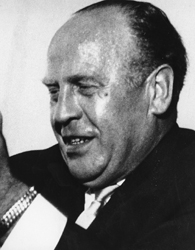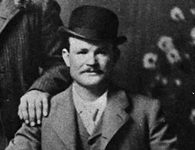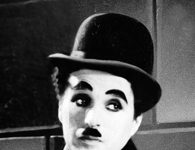Oskar Schindler was a Nazi party member, philanderer and war profiteer who saved approximately 1,200 Jews during the Holocaust. Schindler is now revered as a hero; he is the subject of a prizewinning book and the Oscar-winning film “Schindler’s List.” But nobody really knows why this wealthy man, who once enjoyed camaraderie with SS officers, gave up everything he had to save Polish Jews.
Oskar Schindler’s Early Days
Oskar Schindler was born on April 28, 1908, in Zwittau, a German-speaking city in Czechoslovakia. Schindler, a Catholic and ethnic German, attended school with Jews, though he never named any of them among his close friends.
As a young man, he joined the pro-Nazi Sudenten German Party. When Germany annexed his homeland, Schindler became a formal member of the Nazi Party and made it his business to profit from the war by taking over two Jewish-owned factories in occupied Krakow, Poland.
Sources in this Story
- Yad Vashem: The Righteous Among the Nations
- United States Holocaust Memorial Museum: Oskar Schindler
- Universal Pictures Home Entertainment: Steven Spielberg’s Schindler’s List
- Jewish Virtual Library: Schindler’s List
- Oskar Schindler.com: Aftermath
- The New York Times: In Person; Schindler Street, N.J.
Schindler’s Notable Accomplishments
As Schindler operated his factories in Poland, the war atrocities that he witnessed began to take a toll on him. When he saw the suffering at the nearby Plaszow work camp, he started protecting Jewish workers at his factories, and arranged for his workers to be moved out of the ghetto and into barracks near the factory.
Schindler even falsified factory records and invented occupations and skills for his workers, claiming that they were essential to the war effort. In 1944, Schindler opened an armaments factory in Brünnlitz, in the present-day Czech Republic. He transferred approximately 1,200 Jews from concentration camps to the factory, ultimately saving their lives.
Steven Spielberg’s film, “Schindler’s List,” chronicles Schindler’s remarkable transition from wealthy playboy to impoverished hero and serves as both a testimony to the Jews he saved and a eulogy for those he did not. The film was an impetus for further remembrance projects and spawned live testimonials from survivors. On the movie’s official site, trailers of the film and particularly striking scenes from the movie are available, as well as videos of primary source accounts.
The movie was based on Thomas Keneally’s book, “Schindler’s Ark,” which tells roughly the same story. (The book was later retitled “Schindler’s List” to tie in with the film.) Posing as a biography of Schindler, the book was actually a highly fictionalized account—perfect material for a dramatic screen adaptation.
Schindler actually had two lists. The first contained names of the Jews that he saved from concentration camps by requesting that they join his factory workforce. A second list, the one that appears in “Schindler’s List,” was a collection of fabricated jobs for each worker to convince the SS that their efforts aided the war.
The Man and His Work
- “Schindler’s List” (DVD)
- “Schindler’s List,” by Thomas Keneally
- “Searching for Schindler,” by Thomas Keneally
- “Oskar Schindler: The Untold Account of His Life, Wartime Activities, and the True Story Behind the List,” by David Crowe
The Rest of the Story
Schindler had spent the early years of the war basking in the riches he earned as a war profiteer and carousing with SS officers. But he soon fell out of favor with the Nazi party, due to his repeated and blatant efforts to protect the Jews. When the war ended, he was an outcast in Germany.
Despite a move to Argentina and attempts by Jewish organizations to aid the once-ruthless businessman, all his projects ended in failure and bankruptcy. Schindler returned to Germany in 1957, destitute and persecuted by the Germans. He died October 9, 1974, and according to his wishes, was buried in Jerusalem.
Schindler was ruined after the war, but the Jews whom he saved remained perpetually grateful to their savior. In 1997, The New York Times profiled two survivors who were then living in New Jersey, Abraham Zuckerman and Murray Pantirer. Zuckerman and Pantirer had become real estate developers and in honor of Schindler, had named more than 20 streets after him.
Learn about the life of Polish-Catholic social worker Irena Sendler, known as the “female Schindler.”











